Upcoming events: Dezeen
Salone 2023
Salone 2023_Design Boom
Salone 2023
Salone 2023_ Design Boom
Salone del Mobile
Salon di Mobile 2021
Trienale di Milano 2021
What’s on: Reopening
Triennale di Milano 2020
Salone di Mobile 2019
In reflection
This month in Milan has taught me so much more than just the history of Italy, its design and architecture. It has provoked in me thoughts about my role as a designer both in my work and in the world, the intersection between art and design, and the importance of environments and spaces. Design is a tug-of-war between solving issues and providing delight. It’s so much more complex than art of engineering, black and white – it’s the in between, and takes on so much more more responsibility.
After visiting the studios and firms of great designers, it became even clearer to me the importance of interjecting a personal voice in my work, whether it be personality (Castiglioni, Portaluppi) or a call to action on an issue I think needs exposure (Fabrica, multiple pavilions at the Biennale, and a motif of Broken Nature at the Triennale). The delight that objects I’ve interacted with on this trip and the subtle details within architecture have given me is something I believe to be essential to the human experience. When one takes a step back and reviews the horrid events happening in our world right now, these small interactions/objects seem pointless/frivolous. And technically, on paper, if one was to measure meaning quantitively, they are. Places like the Prada Fondazione and Cimitero Brion, large volumes of space that serve a sole purpose of speaking to the eyes and heart, could be argued as so because they lack an immediate tangible solution to a pressing problem. But they also offer places of inspiration and solace to those who need it, which a lack of can be felt just strongly and is just as valid. They’re essential to create memorable experiences for a collective memory, which can take us where we want to be, as change can only be gradual. In conclusion to this somewhat stream of consciousness, it’s not necessary to be a superhero; at the same time, just talking about theory and changing systemic thought isn’t enough either. To create objects or spaces with meaning, passion and intent, regardless of its practical score, is enough.
Somewhat related to my previous paragraph is the intersection between art and design I saw so frequently in Italian design. Before this trip I had the idea that these two entities were pretty much mutually exclusive. I’ve realized now that this is what sets apart industrial design in Italy and the U.S., at least from history, my own perception, and the rhetoric I’m familiar with. In Italy, there is a playfulness and sense of history that imbues everything, from the architecture of the streets to the objects it produces. I know every country has its merits, but as a testament to this, I think one can look at the streets and spaces in Italy. With my realization of the importance of our environments and spaces that surround us and how it affects us and our work, we can look at the urban planning of Italian cities. As Robert said in his post, Italian cities are older, and were largely planned for pedestrians with a large emphasis on community and public spaces. The cities in the U.S., in contrast, are planned around cars, which I think subliminally affect the way we interact with others and exchange ideas. Even in comparing the parks, one can see a level of attention and care to the details and design of the park that even the most famous public parks in America lack.
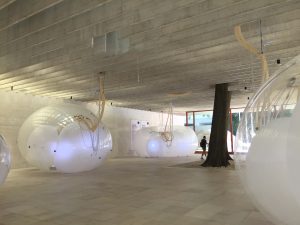
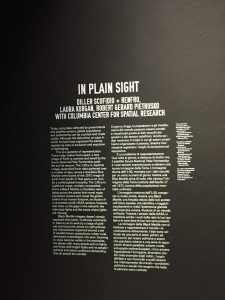
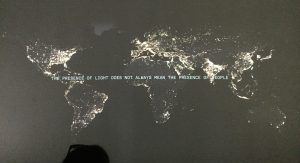
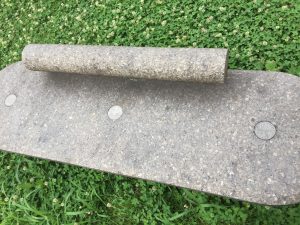
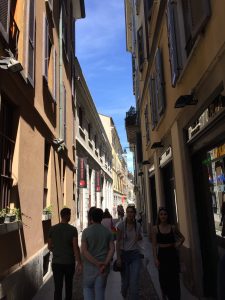
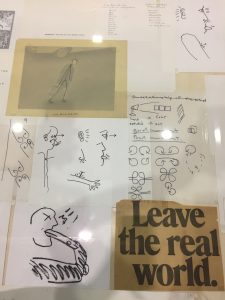
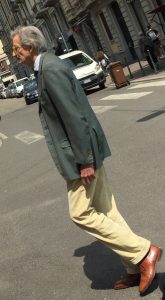 Possibly one of my favorite pictures from Milan, I’ve never seen a man who represented a city so beautifully. He was walking calmly on the street, in his own world, as if one with the city. Can only hope to be the same in whatever city I live in in the future
Possibly one of my favorite pictures from Milan, I’ve never seen a man who represented a city so beautifully. He was walking calmly on the street, in his own world, as if one with the city. Can only hope to be the same in whatever city I live in in the future
In Reflection
Studying abroad on this program helped me learn everything I wanted to learn about Italian design in Milan. I was interested in seeing how a city and country that is known for design, and even labelled as a design capital of the world, goes about designing various products, and how those products are displayed.
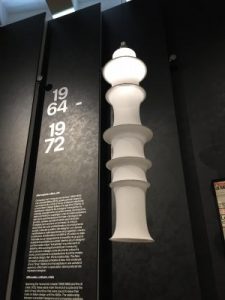
I was surprised how integral design is to Milan. Now that I’m back in the US I’m a bit jealous of how easy it is to access material (I bought so many books). Compared to the US, there is a lot more emphasis in design. I thought this was the most obvious in the amount of space in Milan that was dedicated to creating, teaching, and even selling design. All of the museums we saw and either did or did not go into were spaces dedicated to Italian art and design. The Triennale did the best at explaining design history in Milan, apart from the lectures. Getting to see all of the objects we had been studying and seeing in their creator’s studios in a timeline was actually a bit overwhelming, but helpful… I even found a few objects that we hadn’t gone over but I saw in places we often visited.
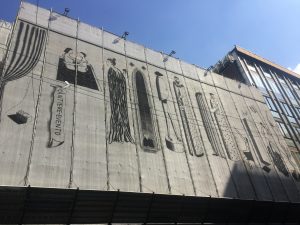
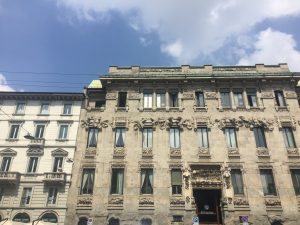 Other smaller spaces for design to exist were the buildings, which varied from older architecture to new. I loved being able to see how newer architecture is applied to older structures, as well as the preservation of historical places like the Duomo or older Liberty-style buildings.
Other smaller spaces for design to exist were the buildings, which varied from older architecture to new. I loved being able to see how newer architecture is applied to older structures, as well as the preservation of historical places like the Duomo or older Liberty-style buildings.
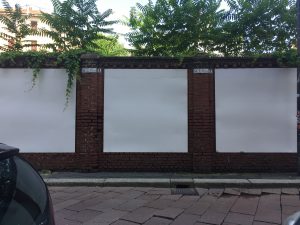
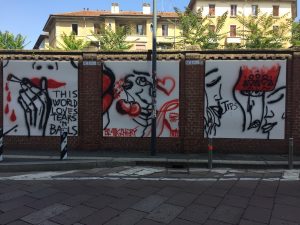
Even on the buildings were other areas for artists or brands to put their work. Although I’m not sure if this was an intentional space for graffiti and posters. But I liked it.
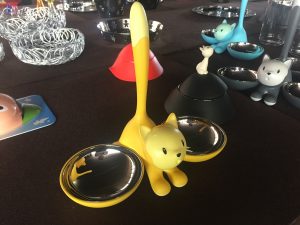
There is also more focus on making products are intended to last (versus planned obsolescence in the US). My favorite part of the study abroad was the visit to Alessi, a company that designs products with the idea of human design. I liked the anthropomorphic and humorous designs that we got to see inside their museum, and the mobile shelves that they were displayed/stored in. One thing that stood out to me in the Alessi presentation was the company’s message, and how they use shapes and forms based on other objects (like buildings, people, animals) to create a bond between the object and its user. Creating products that last was something they emphasized, and I loved that they create longevity by creating objects with personalities and forms that anyone can recognize and love.
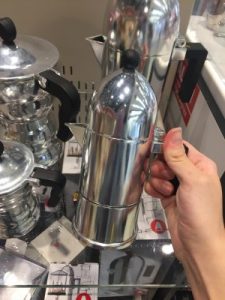
The trip to the gift shop was kind of rushed, and I’m very indecisive, so I only got a small magnet and keychain, but I found more Alessi products in the airport before I left (I thought I was going to miss my flight). While I was trying to decide which coffeemaker to get, I watched kids go up and play with the salt shakers and bottle openers. I liked that I got to see how people would interact with Alessi products on the shelf, and that the kids I saw loved the salt shakers (although I think they thought they were toys) as much as I did. I thought it showed how effective Alessi’s message and playful vibe is, and is something I want to show in my own work.